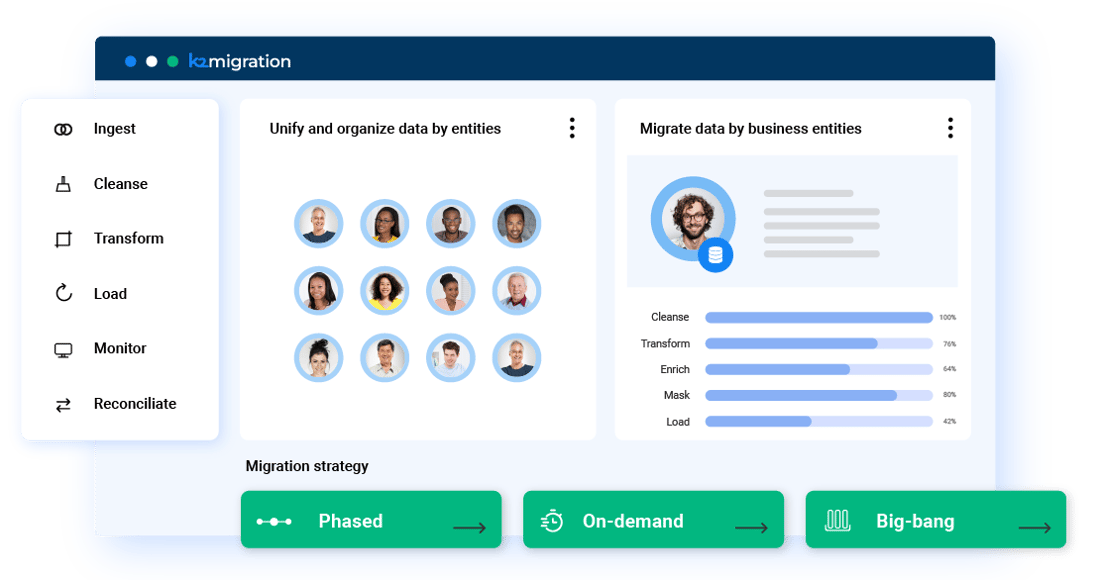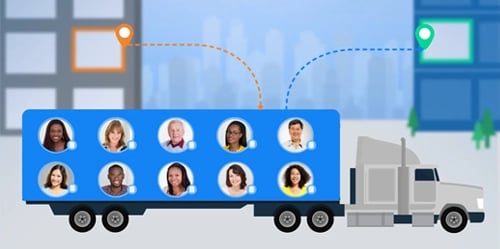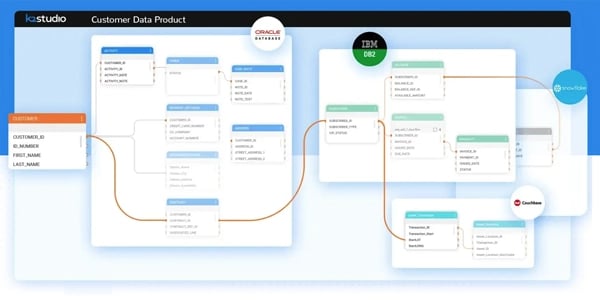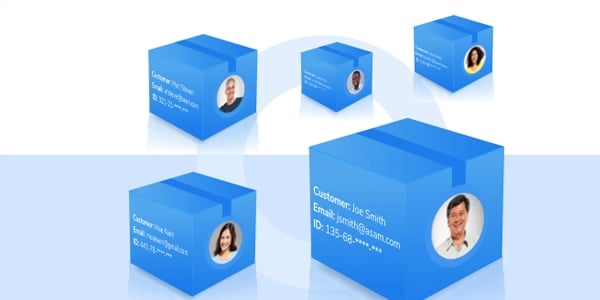End-to-End
Data Migration
A complete enterprise solution, catering to data ingestion, transformation, quality, and reconciliation
Full Business Continuity
Uniquely supporting side-by-side operation of the legacy and new systems during phased migration
Migration Method Flexibility
Providing choice of 3 migration methods, and the ability to seamlessly change between them
Patented Business Entity Approach
Providing granular control of the migration process, and ensures validity of the migrated data
Minimize the time, effort,
and risks of data migration
ONE TOOLKIT, ALL DATA MIGRATION FUNCTIONS
Migrate data automatically
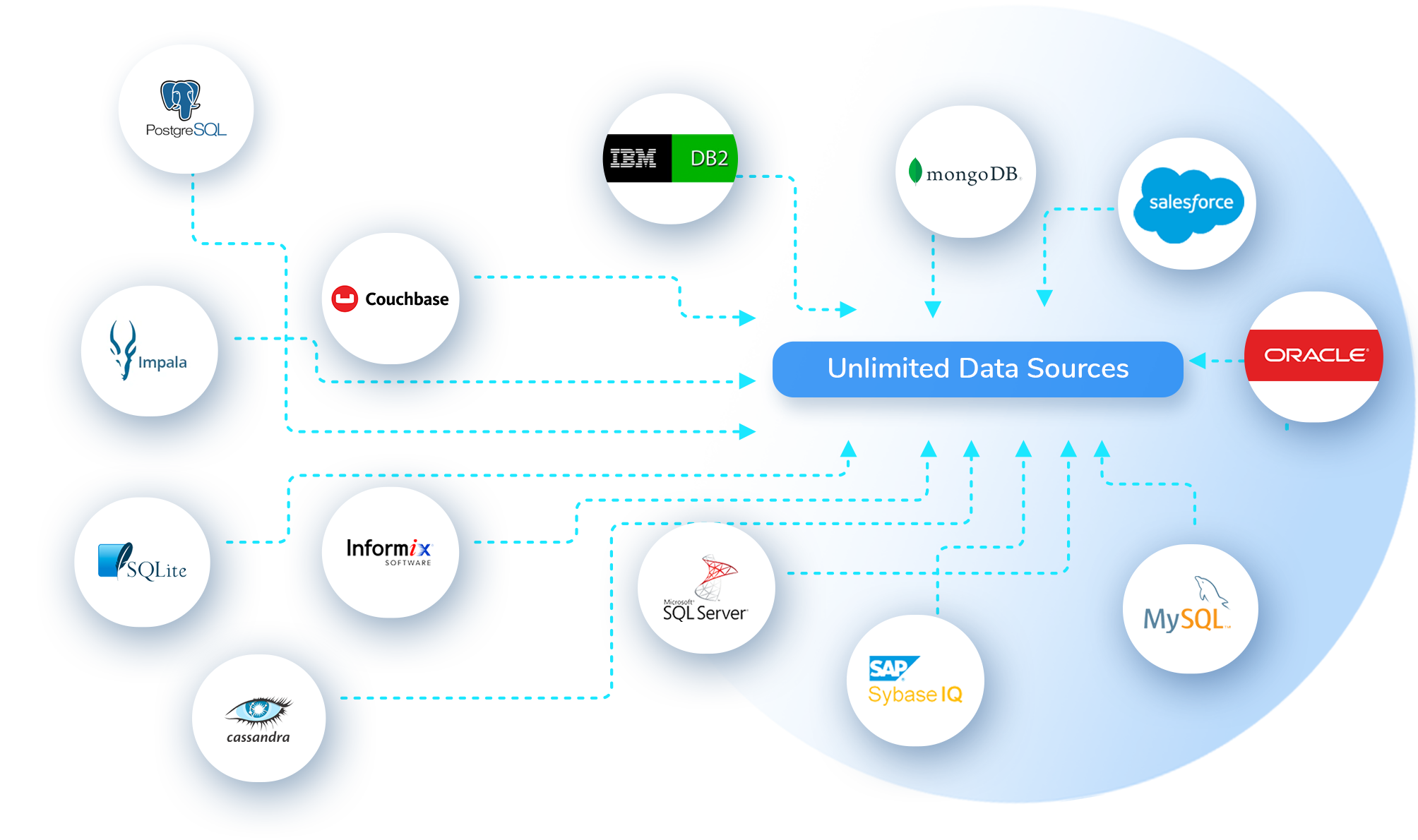
K2view entity-based data migration integrates and organizes data from the migrated source system(s) into unified business entity datasets, transforms the entity data in-flight, and loads it into the target systems.
-
Business entity data models are auto-discovered and refined by data engineers.
-
Data extraction logic is auto-generated based on the entity model.
-
Built-in connectors are provided to relational and non-relational DBs, file systems, and APIs.
-
Master data management and data cleansing ensure the quality of the migrated data.
-
Data transformations are configured code-free, and applied in-flight to the entity dataset.
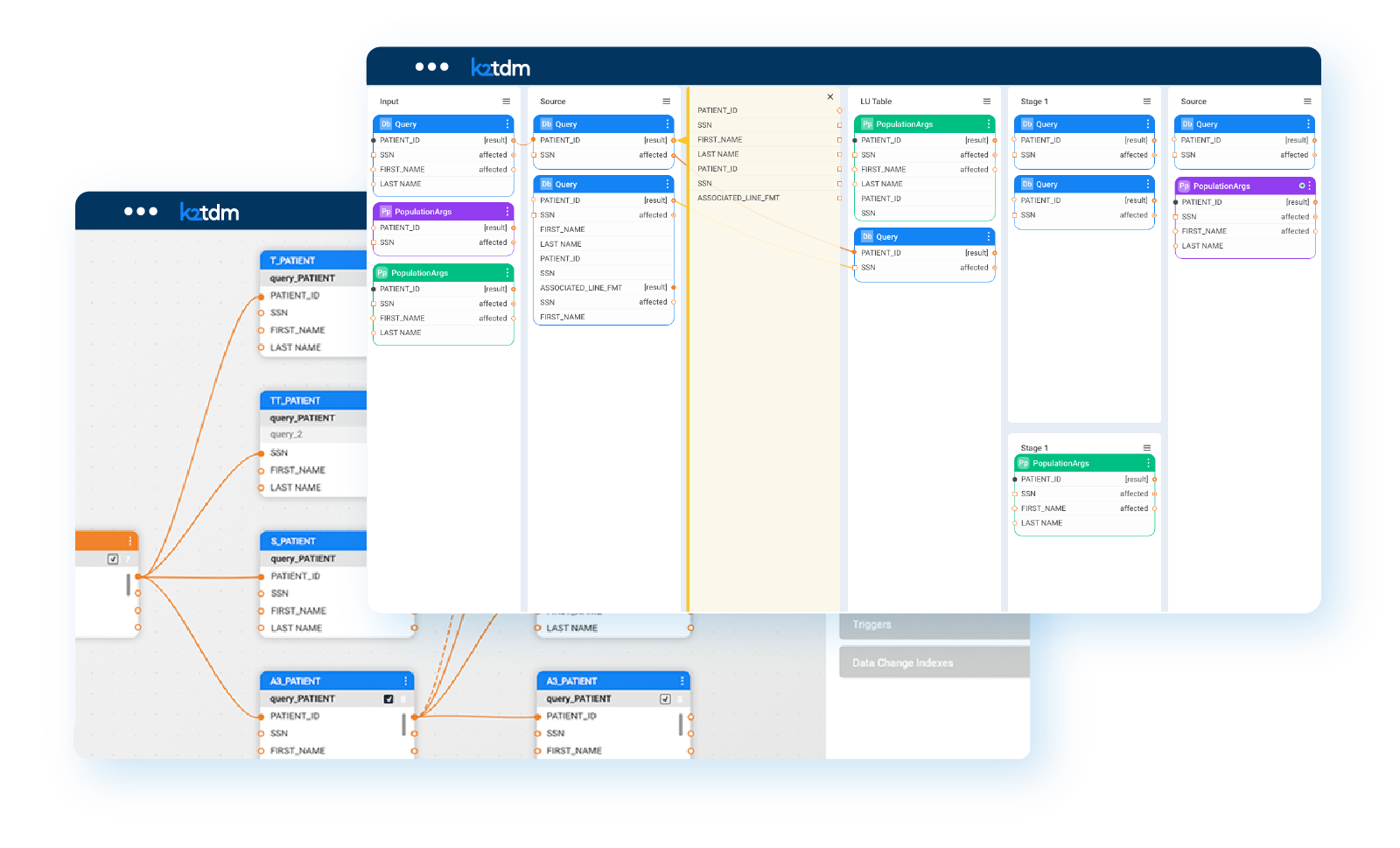
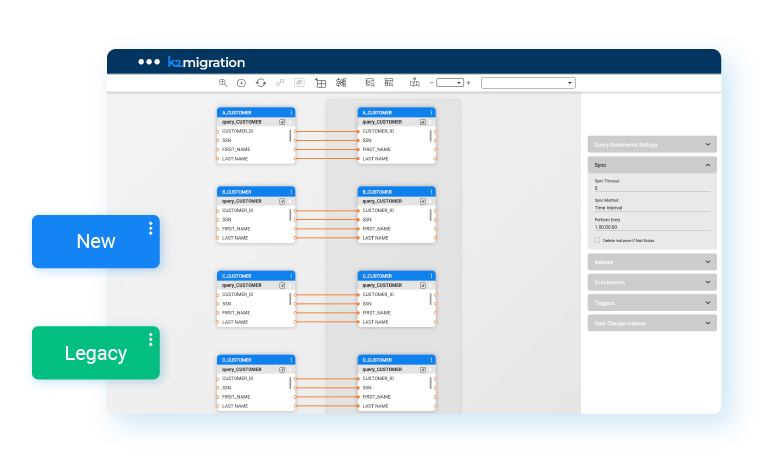
100% BUSINESS CONTINUITY
Operationalize data migration

There are zero disruptions to operations with entity-based data migration.
The entire data for each business entity (a single customer, for example), from all sources, is migrated as a single unit. Data migration is executed in phases, by any entity segmentation criteria that make sense to the business (e.g. customer location or customer status).
"Migration bridging" supports a phased data migration, by migrating entity data on the fly when the data for a specific business entity is requested by the new system.
“Data migration projects often exceed their budget by 25% to 100% or more, due to a lack of proactive attention to data quality issues,
(a problem that persists post-migration)”
DATA MIGRATION METHOD FLEXIBILITY
Keep your migration
strategy options open
K2view supports all 3 migration strategies, with the ability to seamlessly change strategies mid-stream.
Data migration observability is provided to monitor data migration progress, as are the means to pause and restart migration, and to compare source to target data (reconciliation).
-
Phased: migrate data in predefined stages, with old and new systems running in parallel, until the migration is complete.
-
On-demand: immediately migrate specific entity datasets on the fly, on demand.
-
"Big bang": safely migrate all data at once, in a short period of time (e.g., over a weekend).
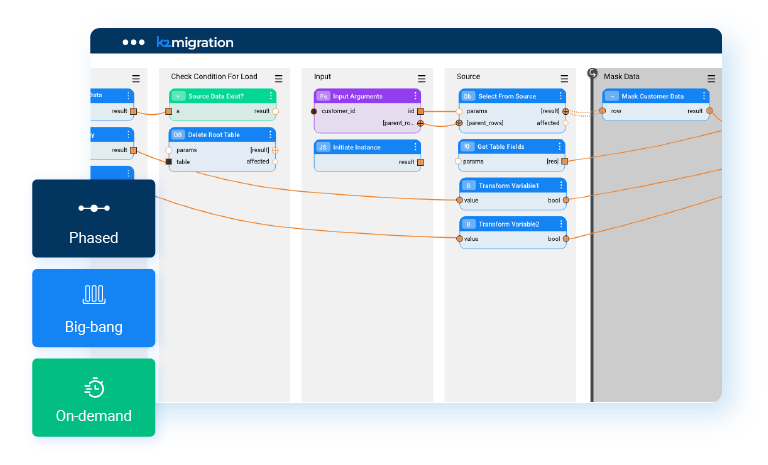
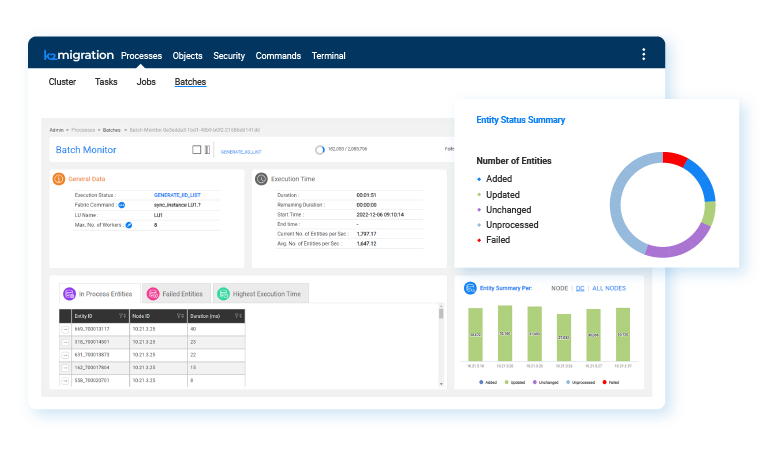
UNMATCHED TIME TO VALUE
Migrate with confidence
Data migration delays are a common scenario: system and data complexity, unforeseen business impact, data corruption or loss, and lack of clear planning are some of the top reasons. K2view data migration tools mitigate these risks:
-
Field-proven in the most complex enterprise data migration projects, including massive enterprise mergers and acquisitions.
-
Patented entity-based approach and technology simplifies migration and cuts implementation effort and costs.
-
Ability to support phased and on-demand migrations, slash the time to initial business value.
-
Full visibility into the migration progress at the granular level of individual business entities, with the ability to pause, resume, and rollback migration at any time.
Data migration via data products
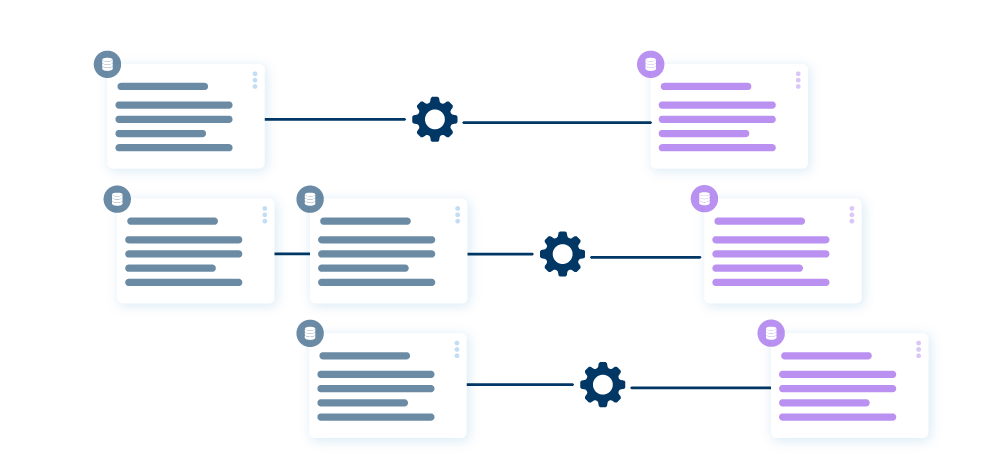
old way
Traditional data migration
In traditional data migrations, data is migrated one database table at a time.
When hundreds or even thousands of tables are involved, data transformation, error recovery, and orchestration of the data migration process becomes highly complex and risky.
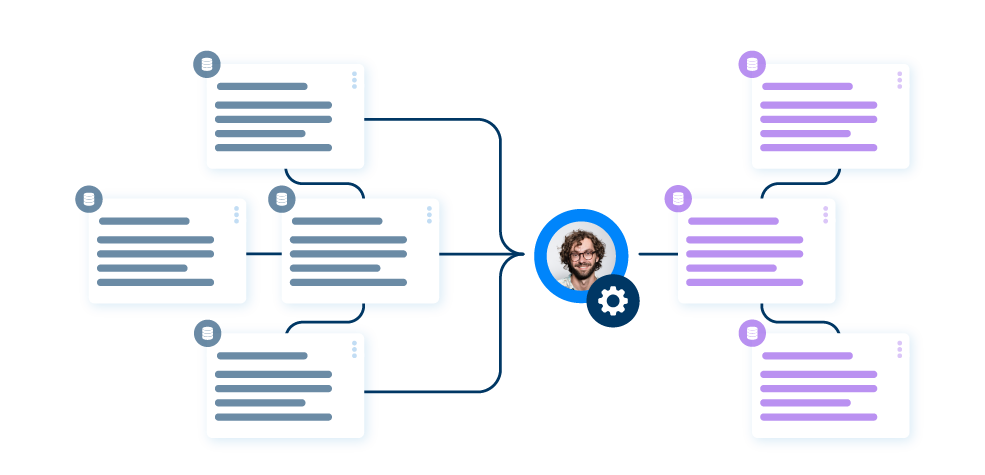
new way
Entity-based data migration
When migrating data by business entities, the data for each entity – including data from all underlying systems – is migrated as a unit.
An entity-based approach removes the risks and complexities from enterprise-scale data migrations, while cutting the costs to a fraction of traditional methods.
K2view data migration
tools and features
Data integration
Extract and organize data by entity, from any source.
Master data management
Create a golden record for each business entity.
Data transformation
Transform and enrich entity as required for the target system.
Observability
Monitor data migration at the granularity of a specific business entity.
Migration bridging
Enable side-by-side operation of the legacy and new system.
Migration control
Pause, restart, and rollback migration at any time during the migration.
Reconciliation
Easily compare data in the new system with the legacy system data.
All migration strategies
Execute phased, on-demand, or big-bang migration.









